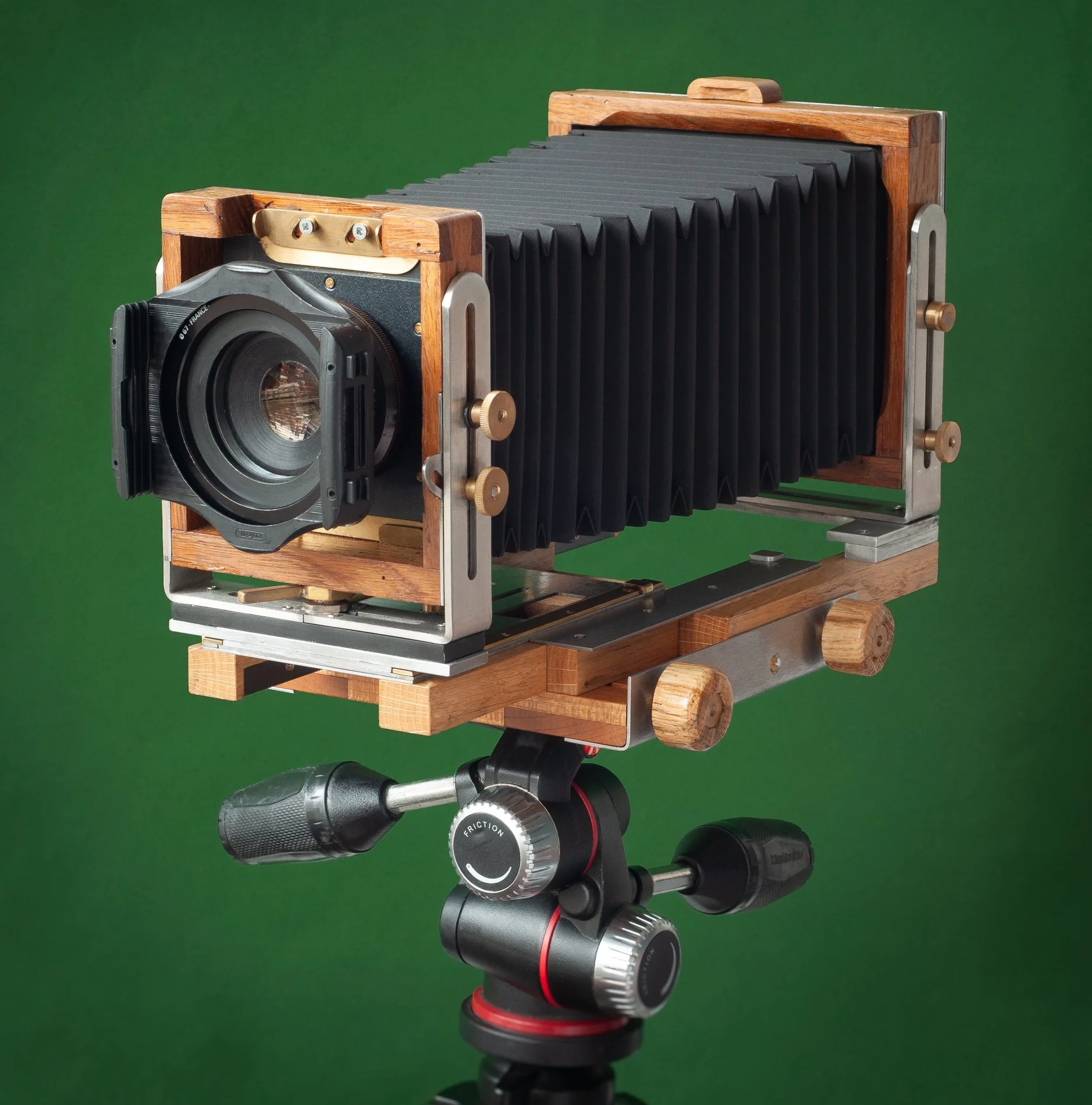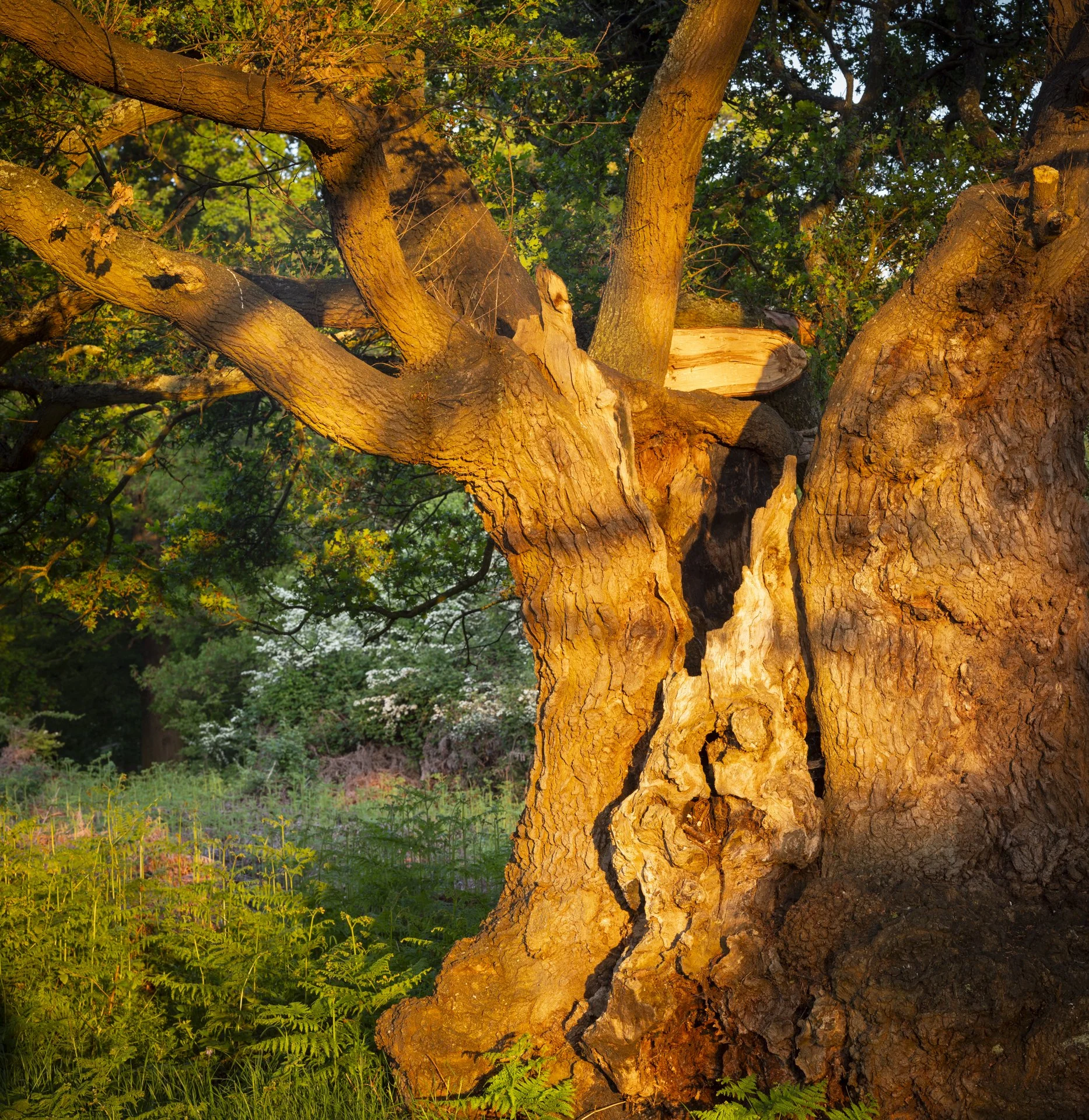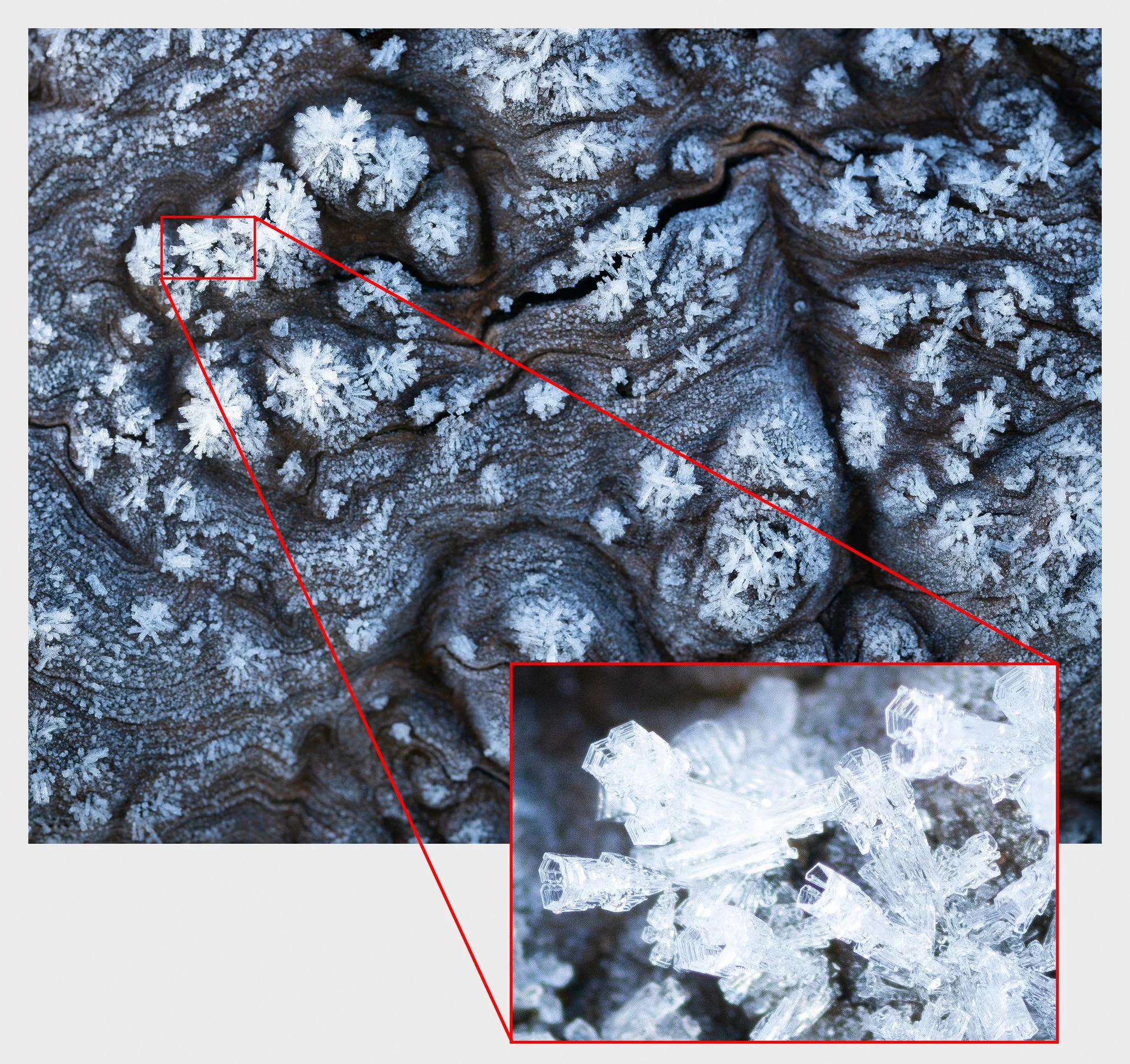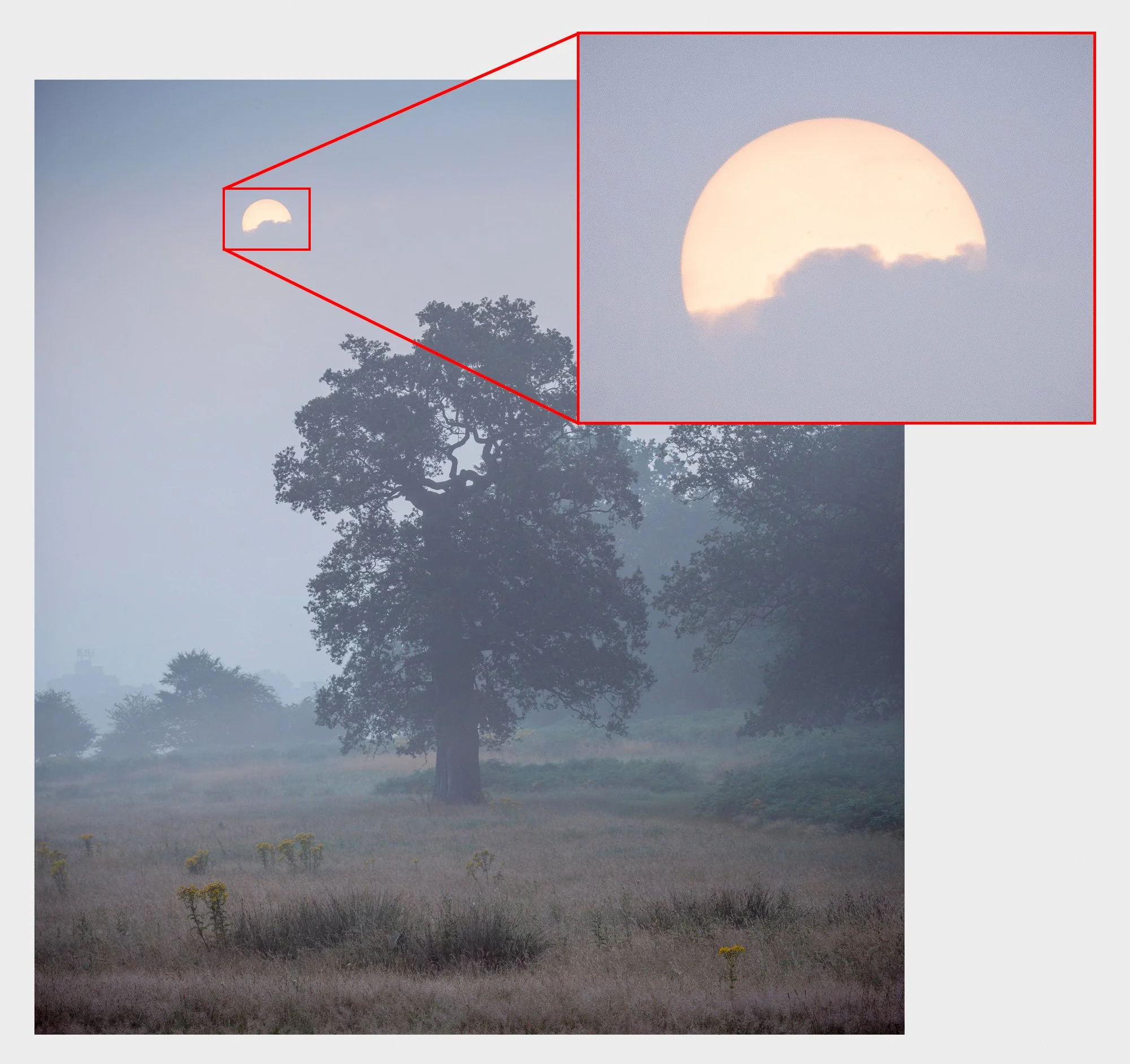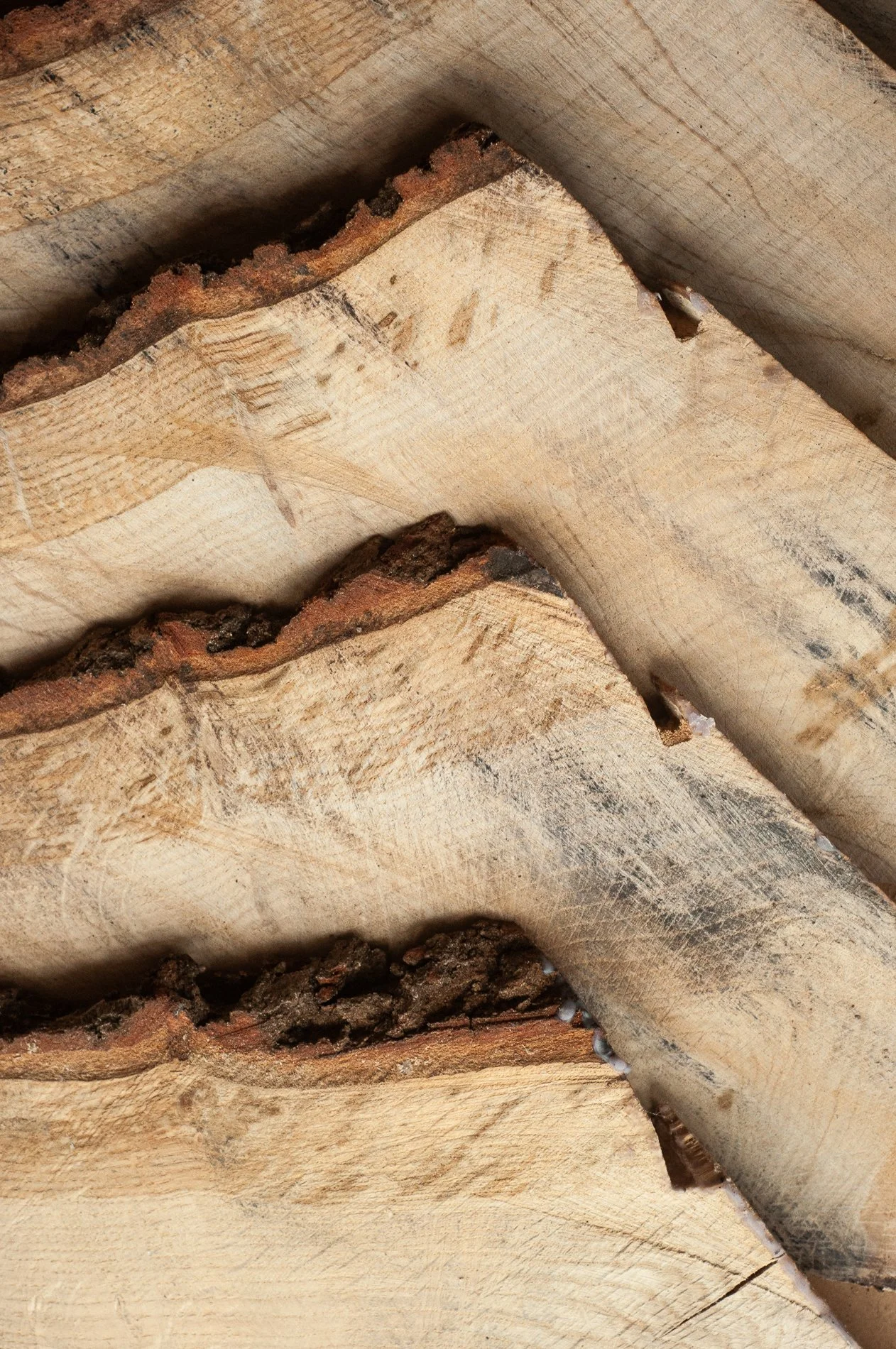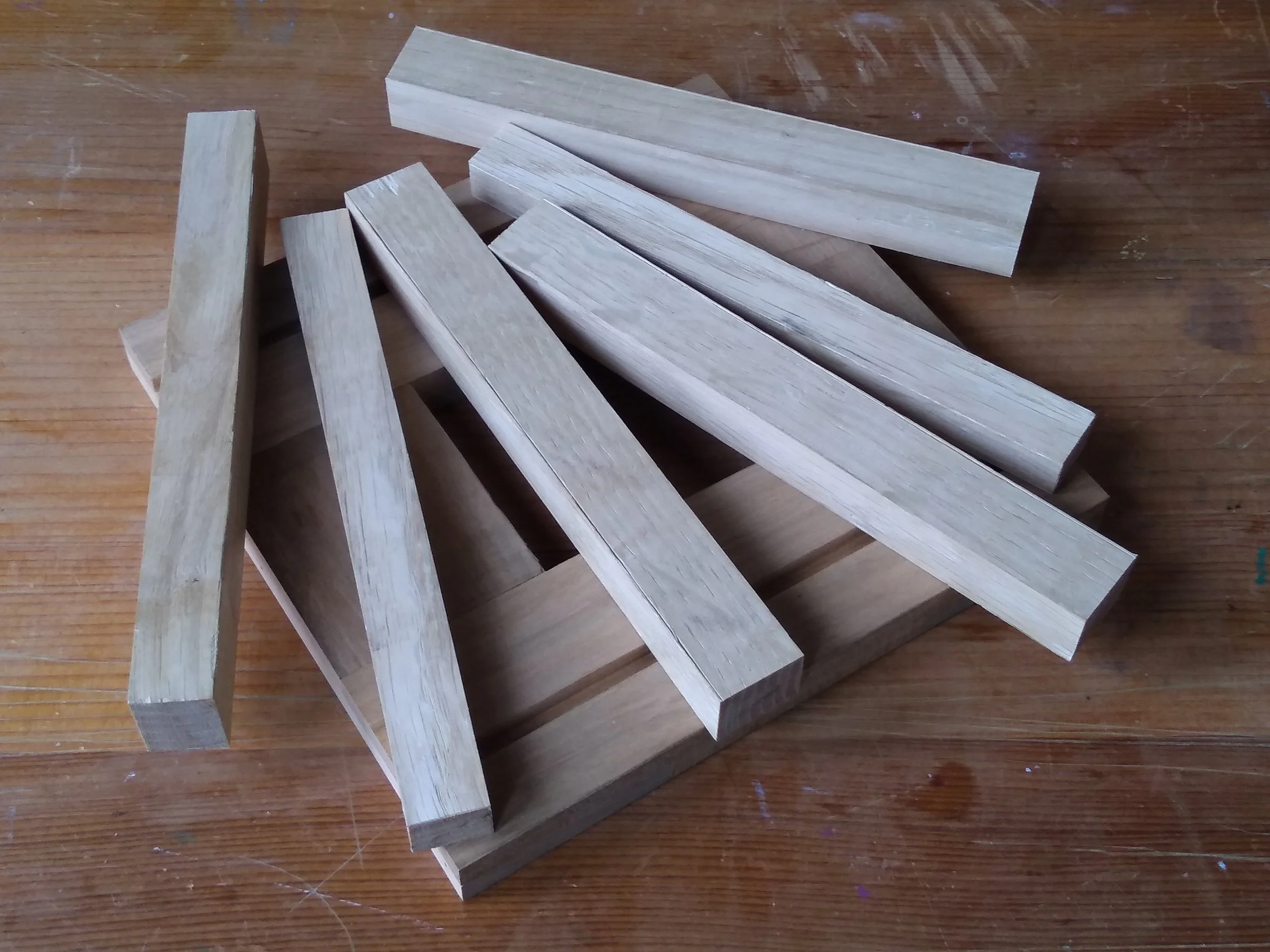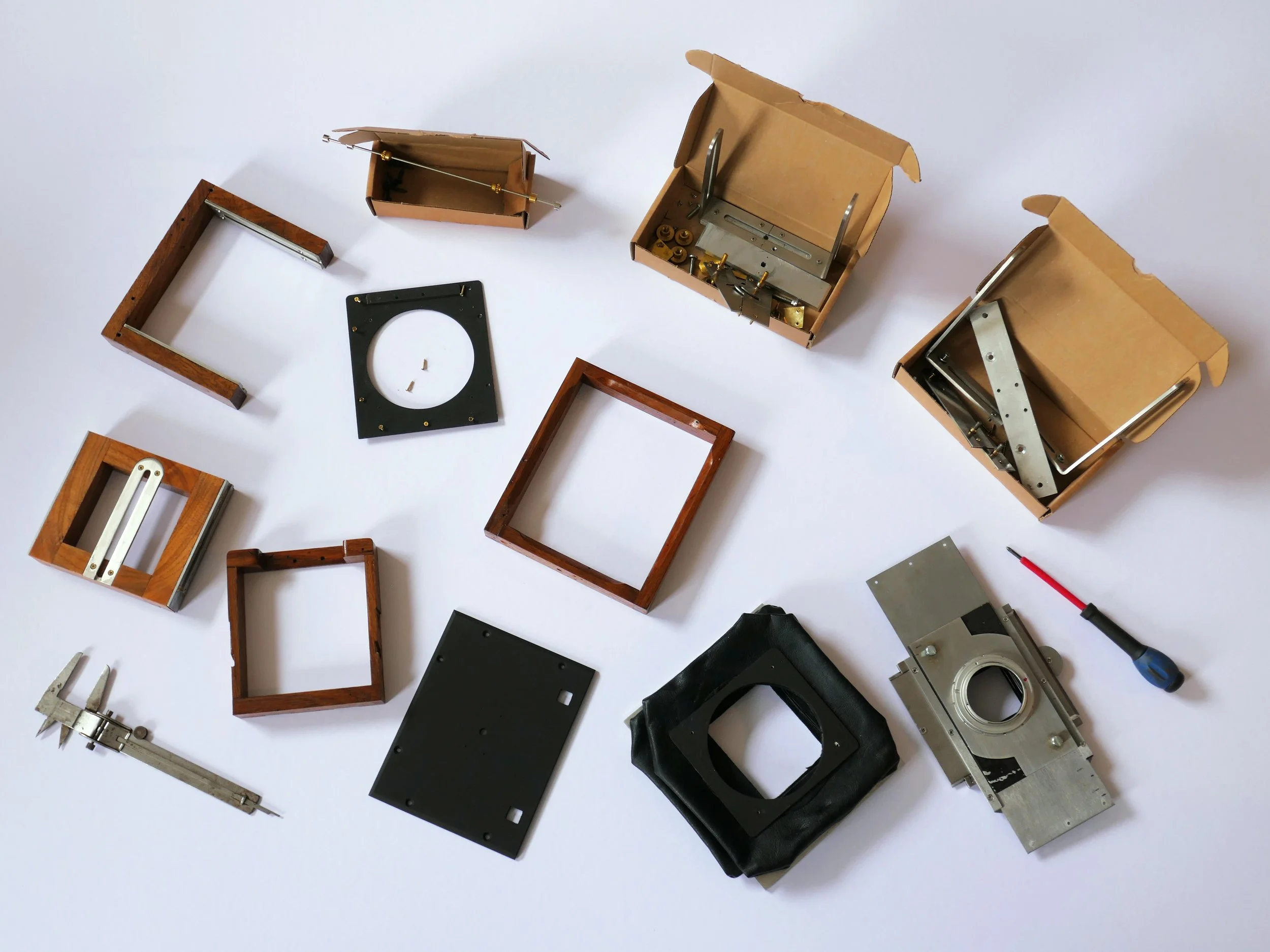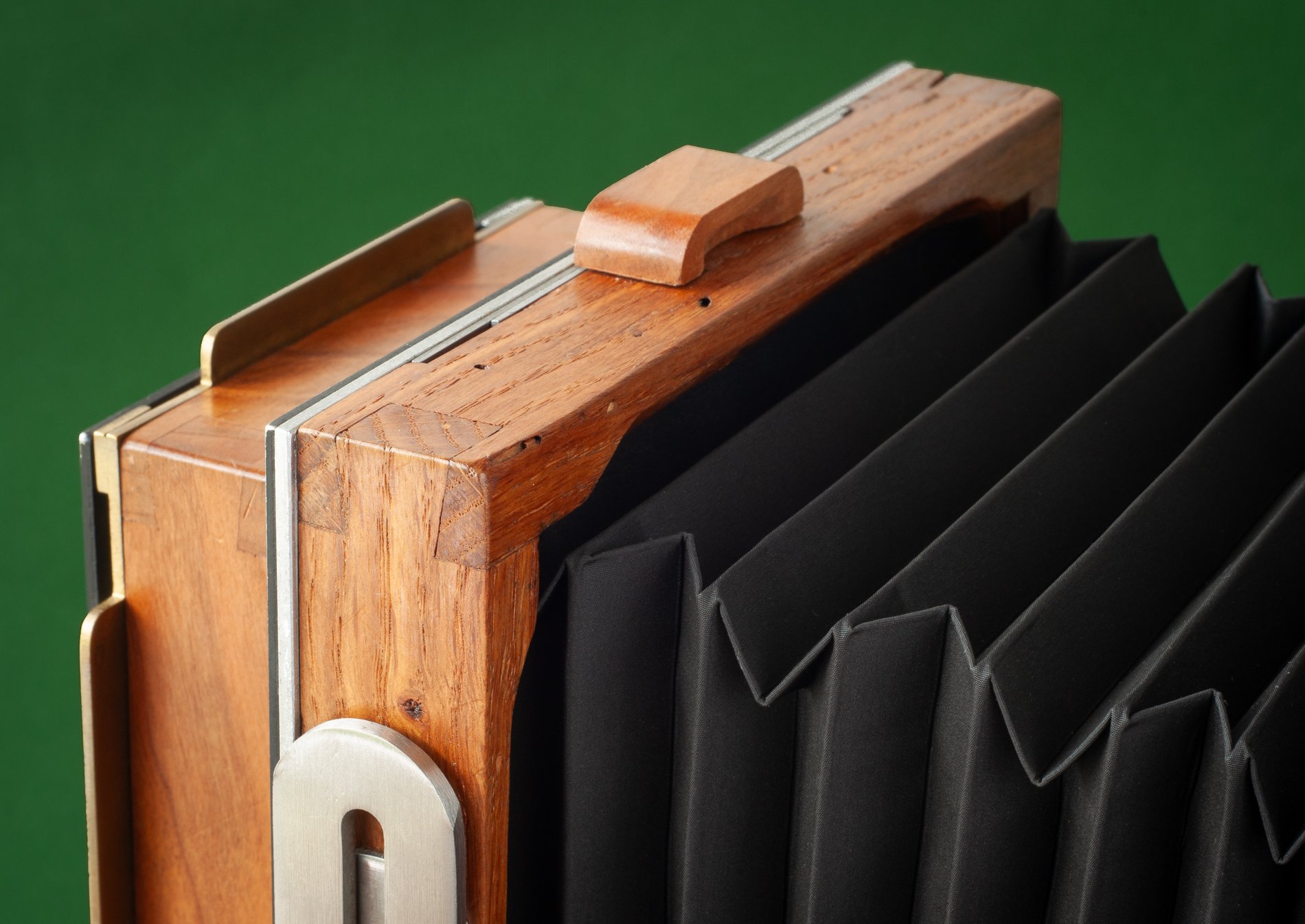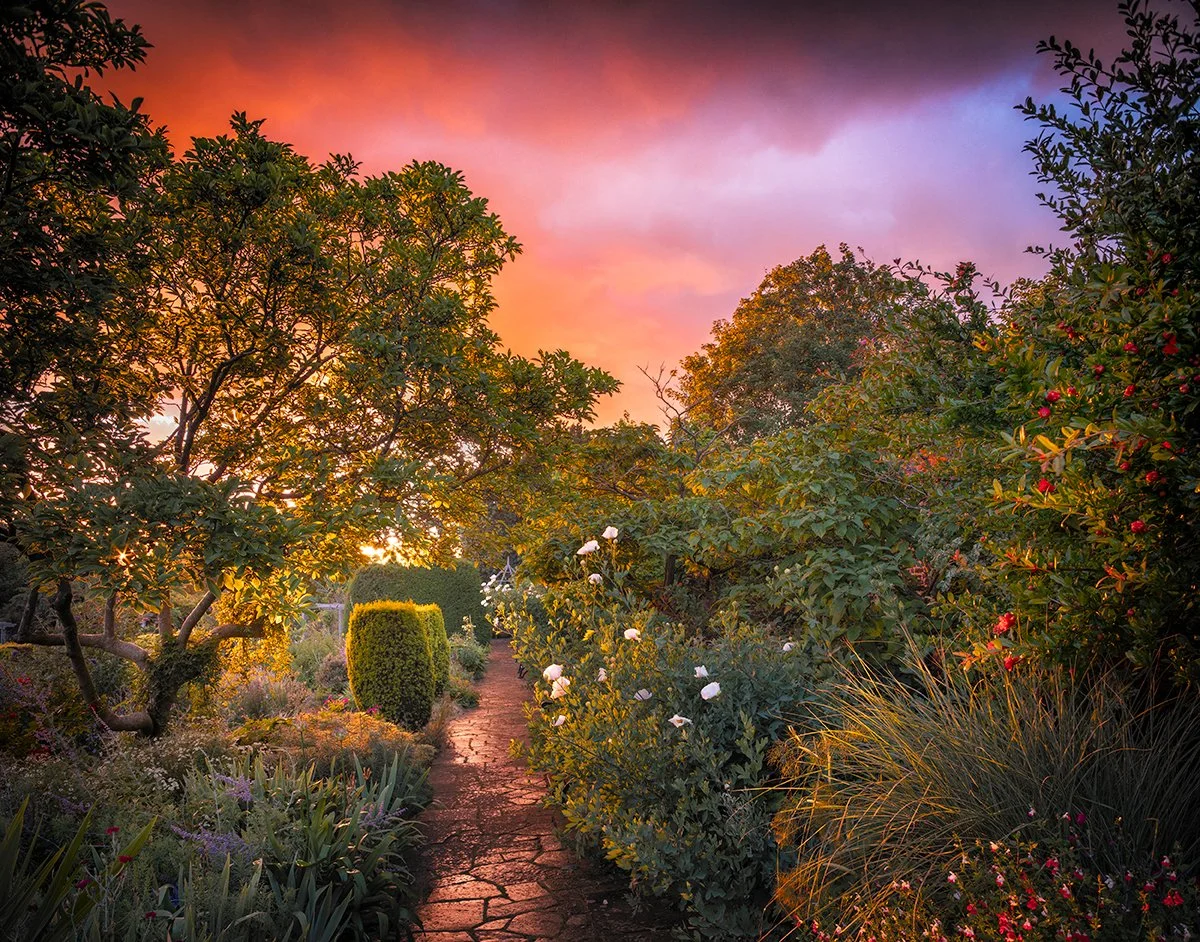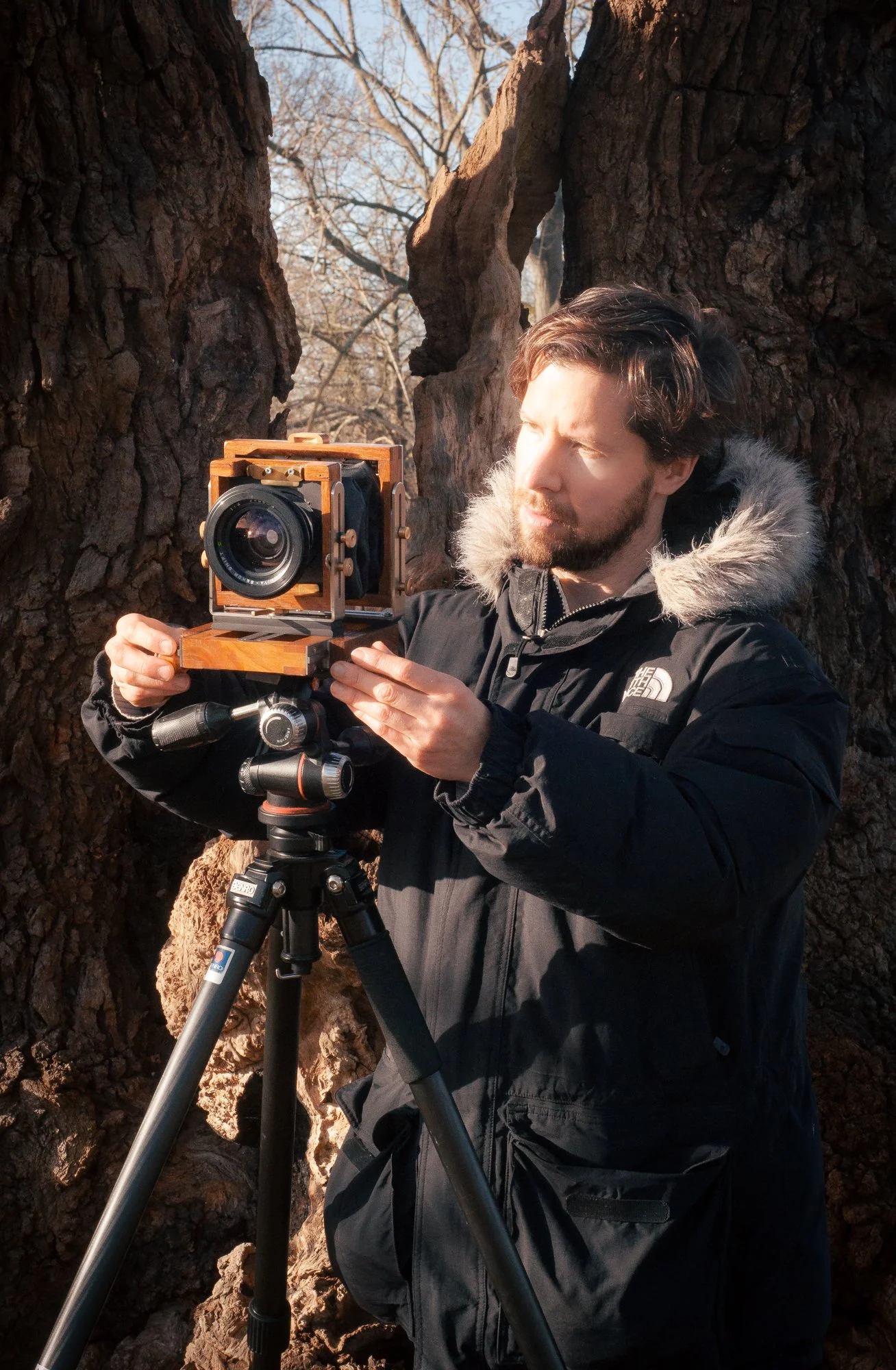Circle of Light
An experiment in art and science
This is the Richmond Park Field Camera, which I designed and built. It’s a camera made of the very thing it was designed to photograph: Richmond Park trees. The wood it’s made of came from ancient oaks in the park, including a beautiful specimen which is still growing not far from Richmond Gate. The story of the trees’ lives, growth, death and return to the soil is told in the wood of the camera itself, which shows the passage of the seasons, signs of dead wood-eating insect activity and the dark streaks of fungi.
Light is the source of energy for life on Earth, and the trees I photograph have been absorbing it through their leaves for hundreds of years, using it to create layers of wood to build branches and roots. Light is also the essence of photography. The same light that nourishes the tree also makes the photographs, in both the physical and conceptual sense.
The Richmond Park camera, unique in design and function, is also one of the most powerful (highest resolution) digital cameras in the world for landscape use, creating huge 200 megapixel images. Its photographs capture so much detail that each portrait of a tree is also a survey of the tree’s ecosystem. By enlarging small areas in the photograph, I can reveal individual insects, birds, lichens, dependent plants and fungi, all representing the biodiversity supported by ancient trees: a cloud of life in orbit around the sun-like oak.
Beyond flora and fauna I’m venturing into a complete study of natural history: tree portraits that also show the moon with its craters and lava seas, the sun, flecked with sunspots, or phenomena of atmospheric optics that reveal the nature of light itself. Nature in its broadest sense, in a broadleaved tree.
I hope this project will inspire a greater appreciation of nature and its long-term processes in a context that everyone can relate to: a much-loved London park. It’s a celebration of the coexistence of art and science, embodied by its title, Circle of Light, which represents both the circular form of the concept and the shape of the sun itself.
The photographs cannot be purely factual: I owe it to the beautiful trees of Richmond Park to show them in their best light, which in Richmond’s atmospheric micro-climate often makes for extraordinary scenes. My personal favourite, the 500-year old oak used to make the camera, will be a star of the series, but many other trees will represent the variety of habitats that make up the nature reserve and the visual highlights of the seasons.
Veteran Oak, Richmond Park: wood from this tree (a fallen limb seen here on the left) was used to build the Richmond Park camera, with which these pictures were taken.
Veteran with Wren, March: this old oak’s twisted nest of branches protects small birds from the predators of the open field; The tiny wren itself hunts invertebrates in the rough bark.
Above: Oak Burr and Frost Rosettes, January. Highly structured water ice crystals taking the form of hollow hexagonal tubes. This kind of ice and snow crystal is well known, but why do many of the tubes have open slots on one side? Awaiting analysis from crystal experts
Oak and Spotted Sun: A tall veteran oak bordering on the Flying Field marks the boundary between open grassland and woodland. The rising sun, momentarily visible through fog and cloud is sufficiently dimmed to show numerous small sunspots across its surface - look very closely. This year was close to the maximum point in the 11-year solar cycle of activity.
White Lodge Veteran and Wasp: The pale hollow trunk of a veteran oak near White Lodge is a source of October warmth for this late-flying wasp. Dry, dead wood like this is the raw material for wasps’ intricate paper nests, created by the queens in early spring.
Wood from the Trees
Some of the materials from which the Richmond Park camera was made - pieces of ancient English oak from the park and part of a cherry tree that once grew at Richmond Gate, all obtained with the kind permission of the Royal Parks. The oak wood shows a variety of different aspects of the trees’ lives, visible on prominent parts of the camera: the front and back frames have a beautiful dark brown colouration caused by the “beefsteak” fungus, Fistulina hepatica, which affects but doesn’t usually kill living trees. It’s considered a highly desirable variety of wood for decorative woodwork, known as “English brown oak”. The focusing rails come from the 400-500-year old Conduit oak, which is still alive. The wood is from a younger limb and shows the typical pale lustre and medullary rays of English oak. By contrast, the focusing knobs, from the same tree (cut from the triangular sections above), show the dark patterns of dead wood fungi which had already started to break down the fallen branch. They incorporate the sapwood, the outer, living part of the tree as well as the dense heartwood.
The camera, combining conventional large format design with digital capture (using a sliding back also of my own invention) was built using hand tools in my garden. The metal parts for the camera body and the digital back, stainless steel and brass, were also cut by hand with saws and files. Most of the techniques and tools would have been used by craftspeople from as far back as the 17th century, which is when the main oak tree of the project probably seeded. The digital back is a means to record the carefully controlled image projected on the camera’s focusing screen, like the sheet film holder in a traditional large format field camera. It incorporates a full-frame mirrorless camera sensor which makes 8 or 9 individual accurately overlapping exposures to cover the 6x7cm format. These are then combined using software to create a new digital negative.
Dead oak comes to life
The Richmond Park camera is already in regular use across my projects and has had an amazing reception so far from all who have heard about it. Its work in Richmond Park itself has only just begun, but I’m already planning a new exhibition concept featuring the future photographs. I’d like to present each tree picture as one large image with a set of enlargements taken from it, each illustrating some facet of the complete ecosystem or the broader natural world - insects species specific to the tree, saprophytic fungi, lichens, birds and even aspects of the sun and moon that might find themselves in the picture. I have yet to establish a time or a venue for this exhibition but have plenty to do producing the material first. See above for some early examples.
In the Press
I’ve made fairly little effort to promote my project so far, having been absorbed in refining the camera and testing it in the field and then working on commissions. I hope to find the time to write and talk about cameras and trees at greater length in the near future. In the meantime here’s an initial story broadcast by ITV News in May (before many of the camera’s later refinements), and a feature in south London-based Brixton Buzz magazine
International Garden Photographer of the Year 2025
It’s a great honour to be named International Garden Photographer of the Year 2025 for a photograph made with the Richmond Park camera. Even in these early days working towards the first few successful photographs of Richmond, this award has brought the whole project to the public eye much sooner than I could have imagined, and in an unexpected way: I still return to my local Brockwell Park when I have the time, sometimes as practice with the camera and sometimes to add to what has been my longest-running London park portfolio project. Although it’s not a Richmond Park tree, this photograph still demonstrates many facets of what the camera was designed to do: making incredibly vivid, detailed images of plants while simultaneously showing aspects of the atmosphere and weather. The perfect combination of setting sun and passing shower illustrates the colouring of sunlight through scattering of blue light (by the many water droplets the rays have passed through). With the blue component preferentially removed, the originally white light becomes mainly red. The photograph is now on display in Kew Gardens (very close to the camera’s birthplace in Richmond) along with a picture of the Richmond Park camera, and will also appear in similar IGPOTY displays around the UK later in the year.
Above: Willows on the Waterside, Beverley Brook: diffraction in water droplets. Richmond Park Field Camera, Richmond Park, October 2023.
Circle of Light
Once, somewhere in Richmond Park grew an oak tree, its twisting branches climbing skyward over decades and centuries of springs and summers, light and warmth pouring through its canopy of leaves to build new wood, boughs and roots.
This wood was the fruit of the sun’s light, distilled from every year of growth into a living monument whose form rose to join the ground and the sky. The blue tit, robin and wren sang in the branches, tiny purple butterflies flew among the leaves, and in the autumn of the tree’s life, mushrooms grew on the hollow trunk, painting the wood with their earthy brown ink. For all the other denizens of the woods and the fields, an eternity had passed.
One day the aging, weather-worn tree sank down into the ground and the great pile of logs and branches began to spread its energy and nutrients back into the living soil. All but a tiny sliver, saved, dried and seasoned.
With this last piece of the venerable dark wood, in whose golden lines and silver rings are drawn summers long gone, an instrument was made to collect and describe the action of light. In this new form it returns to the forests and fields of its birth to show how it was born and how the centuries have passed.
Max A Rush
